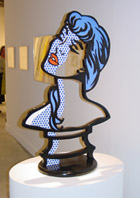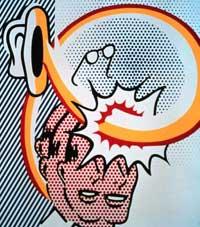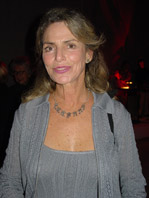|
2006
Essentials for Travellers Okanagan Fall Wine Festival 2007 Okanagan Summer Wine Festival 2007 International Wine Events in 2007 Vancouver Playhouse International Wine Festival 2007 Okanagan Fall Wine Festival 2006 Sonoma County Showcase of Wine & Food 2006 International Wine Events in 2006 Recently Recommended Vintage Destinations Travel Books Madrid Fusion IV ~ Spanish Wines Take Flight Prince Edward County's Field of Dreams Long Dog Winery - No Long Shot! Vancouver Playhouse International Wine Festival 2005 Chicago Treasures from Art to Wine New Zealand: A Taste of Things to Come TimeOutToronto ~ The Triplets of Belleville Arizona Wineries The Lowdown on Lodi ~North America’s most exciting viticultural area International Wine Events in 2004 World's Largest Parsnip ~ Royal Winter Fair 2003 Uxbridge Celebration of the Arts 2003 Myths and Legends of the World Michelin Three Star Chef at Wildfire Restaurant at Taboo Best Vintage Destinations ~ Top Spots for 2002-2003 The Shiraz Rush is On! ~ South Africa's Hottest Grape IFOAM 2002 Organic World Congress 2002 Miami Art Highlight - Roy Lichtenstein: Inside/Outside New Horizons for Ontario’s Culinary Wine Tourism© New Zealand ~ A New Culinary Cornucopia
|
|
|
Vintage Destinations 2001 Miami Art
Highlight
Roy
Lichtenstein: Inside/Outside Organized by MoCA and curated by MoCA Director Bonnie Clearwater,
The
works from the exhibition will travel to Malba Colección Costantini, Museo de
arte de latinoamericano in Buenos Aires, Argentina from March 20, 2002 to June
15, 2002. “Lichtenstein’s
work can be appreciated on many different levels,” states Bonnie Clearwater.
“His methods of representing two- and three-dimensional space look deceptively
simple, but in fact are highly complex and demonstrate a variety of visual
phenomenon. “Lichtenstein credits
his teacher and mentor at Ohio State University, Hoyt L. Sherman for introducing
him to the science of perception and encouraging him to merge science with
aesthetics. “He
aimed to shake up people’s confidence in their vision,” notes Clearwater,
“and even more importantly his own. He
wanted to make viewers aware of the fact that they should not always trust their
eyes.” Roy
Lichtenstein was born in 1923, in New York.
He entered Ohio State University as an art student in 1940. His education
was interrupted from 1943 to 1946 when he served in the army, but he returned to
complete his graduate degree and taught there until 1951. He
became known in the early 1960s for his paintings based on comic strips and for
a personal style defined by bold primary colors and the use of Ben Day dots - a
technique cartoonists use for shading and to suggest the dot patterns of
commercial offset printing. Although
the mechanical graphic style Lichtenstein devised in the 1960s remained a
constant characteristic of his work throughout his career, his imagery in the
post Pop years often deviated from the original comic book sources.
[An Excellent Full Color Catalog is Available] http://www.miami.com/mld/miami/entertainment/visual_arts/2552561.htm Icon of
American art found his muse in science A
periodic table of the elements always hung in Roy Lichtenstein's studio in
Manhattan's West Village. And if you were lucky enough to catch Lichtenstein
lunching with his wife and assistants at their favorite French diner in the
nearby meat-packing district, you'd be more likely to hear them talking about
quarks and DNA than about the art world. ''I
loved one funny thing he used to say,'' says his widow Dorothy. He relished, she
relates, that ``he was going to leave his soul to science.'' That
type of mind-bending conundrum was central to Lichtenstein's life and art. He
transformed the visual language of cheap advertising and comic strips into an
elastic style that could riff Picasso, Matisse and misty Chinese landscapes with
the same jazzy verve. Remembered for an unassuming manner and rare ability to
listen graciously when a fan rambled on during an art event, this icon of
American culture -- who died in 1997 at 73 -- was himself a devoted fan of
Scientific American.
''He
was extremely interested in the cutting edge of science, in perception,'' she
continues. ``The thing he liked about science so much is that it always tests
its assumptions.'' ALTERED
ASSUMPTIONS Perhaps
the greatest contradiction of Lichtenstein's career was that he spent years
testing people's assumptions that his art was primarily Pop. Changing those
assumptions is still one of the goals of the Roy Lichtenstein Foundation, which
Dorothy heads. Toward
that end, the foundation is developing an oral history project about the
artist's mentor, Hoyt L. Sherman, the Ohio State University professor who helped
shape Lichtenstein's thoughts on visual perception. The foundation is also
facilitating loans and research for exhibits at institutions, including the
Brooklyn Museum of Art, the National Gallery of Art in Washington D.C.,
Louisiana Museum of Art in Denmark and the MOCA show, which travels in March to
the Latin American Art Museum in Buenos Aires. ''Before
Roy became a Pop artist he worked as an artist 20 years prior to that, and
people [still] definitely think of Roy's art as a cartoon,'' she says. ``After
the 1960s, he hardly did any of that at all. He had so many different series,
like the group of paintings about mirrors, which were really about reflections
and how you can read things. ``And
what was hardly known at all is that he really had produced a large body of
sculpture.'' Yet
for Lichtenstein, the title of Pop master remained long after the art had moved
on. ''Roy
thought it was hopeless to get rid of that title,'' Dorothy says with a sigh. When
Dorothy and Roy met, Pop Art was the new kid on the art block, a marketable
phenomenon an artist in his breakthrough years wouldn't dare relinquish.
Although Roy had been painting his cartoonish Benday blonds, like the one in The
Engagement Ring, at least three years before he started seeing Dorothy in 1964,
the similarity was something that always drew comments. Dorothy
was an art history major fresh out of college when she landed a job at the Paul
Bianchini Gallery in Manhattan, one block south of Leo Castelli Gallery, where
Lichtenstein's first show sold out before it opened in February 1962. Bianchini
had been showing a wide spectrum of art, including master drawings, and
Dorothy's job was to devise shows with a more contemporary edge. ''It
was a very exciting time,'' she remembers. Still,
this polite but private woman allows that ''work was the main thrust of his
life.'' A would-be biographer even gave up on the artist as a subject after he
and Lichtenstein concluded that they'd have to conjure a phantom life in order
to write a book worth reading. ''There
was no place that he would rather be than in his studio,'' remembers a close
friend, Miami dealer and collector Marvin Ross Friedman, who will speak about
Lichtenstein at MOCA on Feb. 16. ``To me it wasn't about discipline, it seemed
to be a passion. One always had a sense that he would be like Monet or Picasso
and just go on forever. He had this enormous vitality.'' The
vitality drove a rarely changing daily routine: breakfast of bran cereal and
bananas, followed by work in the studio from 10 a.m. to 6 p.m. with a break for
lunch. Although the Lichtensteins lived in Southampton on Long Island and the
artist often dealt in images related to beaches, he wasn't a beachgoer. The
1979 sunbathing Mermaid in Miami Beach, with her flirty blond curls, was for him
a matter of exuberant and inventive form, his widow says; it was a piece to
balance historical allusions and his ongoing fascination with the science of
perceiving real objects and their representation. Lichtenstein
''was always looking at things and turning them to art ideas,'' she says.
Whether the public, wearing its Pop Art blinders, got it or not didn't seem to
deter him. ''People
were really confused when he made his mirror sculptures. They just didn't know
what to make of it,'' she says. ``There were a few people who instantly got the
idea of it being an object and being an abstraction, and of course he felt that
way about all his work. 'I must say that even when he was doing his Chinese landscapes [a 1996 magical, nearly abstract series included in the MOCA show], he was thinking, `well, no one will ever believe that this is a Lichtenstein.' '' Taken from: http://mocanomi.org/html/current_exhibition2.html
|
||
For further information contact Michael Vaughan at
|

 This is Miami’s first major exhibition of the late
Pop master and what a wonderful show it is. It focuses on the artist interest in
understanding people’s comprehension of what they see.
This is Miami’s first major exhibition of the late
Pop master and what a wonderful show it is. It focuses on the artist interest in
understanding people’s comprehension of what they see.
 Dorothy
Lichtenstein traveled last month to Miami Beach to talk budgets and mission with
members of the Roy Lichtenstein Foundation who had gathered for the
re-dedication of the artist's Mermaid sculpture outside the Jackie Gleason
Theater and for the opening of Roy Lichtenstein: Inside/Outside, which runs
through Feb. 28 at the Museum of Contemporary Art.
(Note that the correct closing date is February 24th)
Dorothy
Lichtenstein traveled last month to Miami Beach to talk budgets and mission with
members of the Roy Lichtenstein Foundation who had gathered for the
re-dedication of the artist's Mermaid sculpture outside the Jackie Gleason
Theater and for the opening of Roy Lichtenstein: Inside/Outside, which runs
through Feb. 28 at the Museum of Contemporary Art.
(Note that the correct closing date is February 24th)